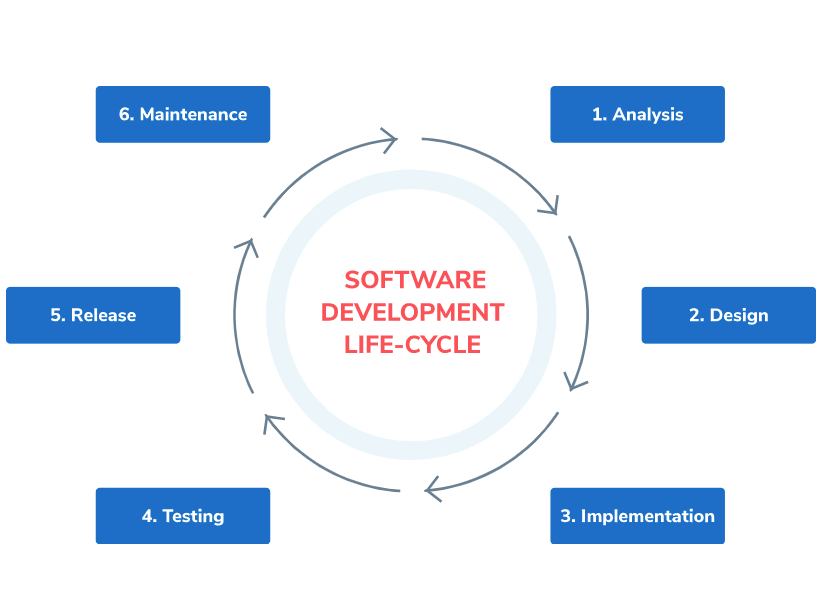Software Development Process
Development Life Cycle
ProgValley will take you through every stage of the software development process (SDLC) – from a business analysis stage through UX/UI and application development to deployment and ongoing support.

Software Development Process
Application Development Life Cycle Explained
Phase 1: Application requirement analysis
The requirement collection and business is the first stage in the web and mobile application development process. It is performed by the senior team of business analysts, technical architects and project managers together with all the business stakeholders and domain experts in the industry.
- Scope definition of the entire project
- Planning for the quality assurance requirements
- Definition of anticipated issues, opportunities
- Recognition of the risks involved
- Timeline definition
Phase 2: Feasibility study
When the requirement analysis phase is done the next step is to define and document software needs in the 'Software Requirement Specification' ('SRS') document. It has everything which ought to be structured and created during the application development life cycle.
There are main five types of feasibilities checks:
There are main five types of feasibilities checks:
- Economic
- Legal
- Operation
- Technical
- Schedule
Phase 3: Design
Based on the SRS document the team prepares the system and software design to define the whole IT system architecture. This design phase will be a base for the next coding phase.
There are two types of design documents that are developed:
High-Level Design (HLD)
There are two types of design documents that are developed:
High-Level Design (HLD)
- Brief description of each module and its functionality
- Dependencies between modules
- Database tables & their main elements
- Architecture diagrams
- Technology details
Low-Level Design(LLD)
Low-Level Design(LLD)
- Functional modules logic
- Detailed database tables
- Complete interface detail
- Complete modules input and outputs
Phase 4: Coding
The next phase is coding itself - the longest phase of the software development life cycle.
Peculiarities of the phase:
Peculiarities of the phase:
- Developers should follow some predified coding guidelines.
- The whole development is divided into tasks for specific modules development.
Phase 5: Testing
Once some part of the software coding is complete, it is sent for testing and the QA team starts testing the functionality to verify that the application works following the requirements.
The process is the following:
The process is the following:
- QA team finds some issues;
- QA team sends them to the dev team;
- Dev deam fixes the issues;
- QA team rechecks the functionality.
Phase 6: Deployment
Once the software is developed and fully tested, the final deployments process is launched.
QA team checks the software on the production environment.
Phase 7: Maintenance
After the release, the application continues its cycle following 3 possible ways:
- Bug fixing
- Software upgrade
- Enhancement with new features
Our Projects
Our proud projects make us excel
Bring to the table win-win survival strategies to dotted proactive domination. At the end of the going forward, a new normal that has evolved generation.
Team
Expert IT Consultants
Let's Talk
Speak With Our Expert Engineers.
Looking For A Software Development Company? Let’s Start With A Free Quote!
Email:
info@progvalley.com
Phone:
(+92) 315 - 3138 - 115

NDA
All your ideas are protected by NDA

Estimation
Detailed time and cost estimation

Scope
Helping to shape your idea and scope
Get In Touch
